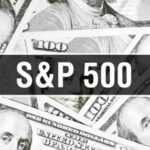In recent years, the portfolios of individuals such as Warren Buffett, Michael Burry, and Nancy Pelosi have garnered considerable attention.
Each of these figures has carved out a distinct path in the world of finance, but how do their investment performances stack up against one another?
Nancy Pelosi
Nancy Pelosi’s investment expertise was evident in 2023, where her stock portfolio surged by an impressive 45% over the previous year.
As of the latest data, her portfolio continues to exhibit strong performance, with estimated profits already totaling $9 million in 2024.
A significant part of her investments is allocated to technology stocks, reflecting her confidence in this sector’s growth potential, particularly amid the rise of artificial intelligence (AI). Notable holdings include Nvidia (NASDAQ: NVDA), Microsoft (NASDAQ: MSFT), Alphabet (NASDAQ: GOOGL), and Amazon (NASDAQ: AMZN), all of which have contributed to her portfolio’s success.
Despite some setbacks, such as losses in Apple (NASDAQ: AAPL) and Tesla (NASDAQ: TSLA), Pelosi remains proactive in seeking new opportunities.

Her recent investment in Databricks, coupled with her portfolio reaching an all-time high, underscores her ability to navigate the market with agility and capitalize on emerging trends.
Warren Buffett
The renowned investor and CEO of Berkshire Hathaway (NYSE: BRK.A), has announced a notable 9% increase in his stock portfolio over the past year. This achievement underscores the effectiveness of Buffett’s investment strategy, which prioritizes acquiring exceptional businesses at rational prices.
With projected dividends exceeding $6 billion in 2024, Buffett’s portfolio boasts key contributors such as Kraft Heinz (NYSE: KHC), Coca-Cola (NYSE: KO), and Chevron (NYSE: CVX).
Emphasizing a deep understanding of investments, Buffett recently acquired a stake in Liberty Sirius XM (NASDAQ: LSXMA).
Through adept navigation of economic fluctuations and adherence to sound investment principles, Buffett continues to demonstrate his wealth-building prowess, withholdings like Apple.
Michael Burry
Michael Burry, the acclaimed investor renowned for his astute market insights, has demonstrated proficiency once again, achieving a remarkable 30% gain in his stock portfolio over the past year.
Burry, whose notable success includes accurately predicting the housing market crash of 2008, as depicted in Martin Scorsese’s film “The Big Short,” continues to attract attention for his discerning market perceptions.
As the founder of Scion Capital and currently managing Scion Asset Management, Burry’s investment approach is closely followed by investors seeking unique market perspectives.
Despite occasional missteps in his predictions, such as the market’s response to the COVID-19 pandemic, Burry’s portfolio has consistently delivered impressive returns, with a gain of +252.53% since June 2013.
Notably, Burry’s largest stock holding currently includes Alibaba Alibaba (NYSE: BABA), JD.com Inc. (NASDAQ: JD), and HCA Healthcare Inc. (NYSE: HCA), underscoring his strategic confidence amid evolving market dynamics.
Burry’s recent bet on Alibaba, reflects his enduring conviction in the company’s potential, despite short-term market fluctuations, suggesting promising prospects for his investment in the coming year.
Evaluating portfolio performance
Among these investors, Nancy Pelosi leads with impressive short-term results, growing her portfolio by 45% in the last year.
Michael Burry, however, shines for his consistent long-term strategy, achieving a 30% gain this year and strong performance since 2013.
Warren Buffett, while lacking dramatic short-term gains, maintains steady growth through his value investing and dividends approach.
Each investor offers valuable lessons for navigating the market, with strategies suited to different goals and investment timelines.
Buy stocks now with eToro – trusted and advanced investment platform
Disclaimer: The content on this site should not be considered investment advice. Investing is speculative. When investing, your capital is at risk.










